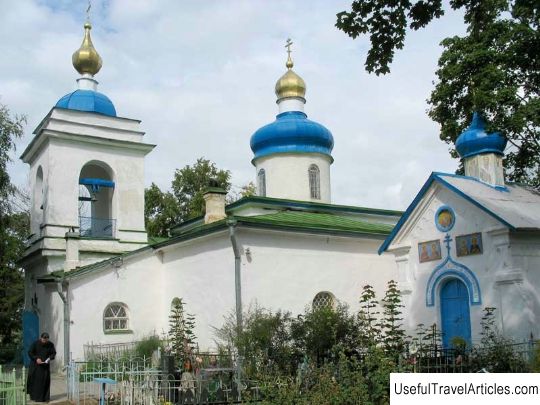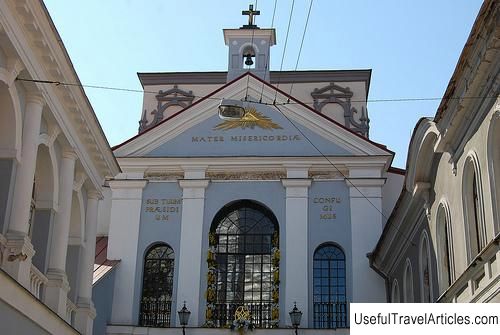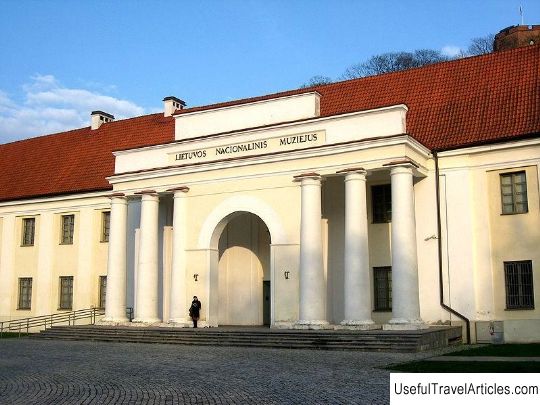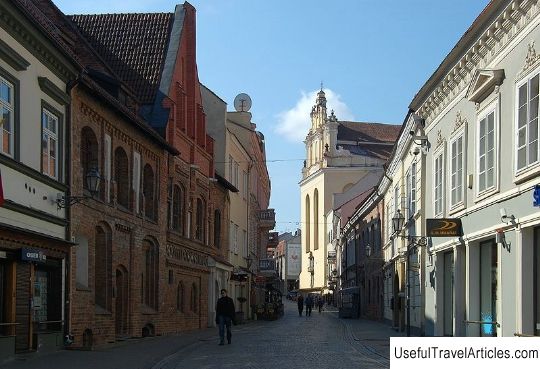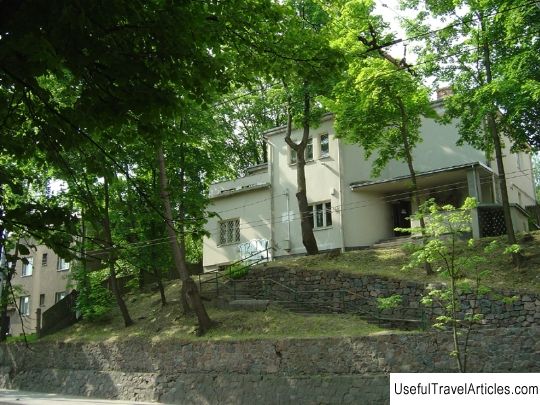Uzupis description and photos - Lithuania: Vilnius
Rating: 7,5/10 (100 votes) 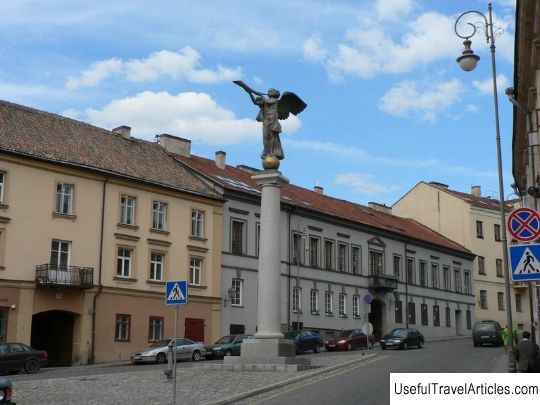
Uzupis description and photos - Lithuania: Vilnius. Detailed information about the attraction. Description, photographs and a map showing the nearest significant objects. The name in English is Uzupis. Photo and descriptionUzupis is a small and cozy isolated quarter of Vilnius. Translated from Lithuanian "uzhupis" means "district". It is often compared to Montmartre located in Paris. One part of the city quarter is located in the Old Town, the other part of the city is surrounded by steep hills and the mountain of Three Crosses, and on the third side there is an industrial zone built in Soviet times. The small quarter of Uzupis has always had an autonomous position in the city : The municipality collected money from the mills for travel on each of the seven bridges. As you know, your budget - your own power. For the most part, poor people lived in Uzupis, and closer to the Middle Ages it was a village of millers and tanners, because the nearby river allowed tanners to soak products in their fast waters, and millers could grind grain, which the peasants delivered across the bridge over the river. A large area at the corner of Poplavskaya and Zarechnaya streets is occupied by a huge palace in the genre of strict classicist forms. This building was built at the end of the 18th century according to the sketches of the architect Augustin Kossakovsky, and in the first half of the 19th century, the palace was under restoration. Since about 1840, the building has been owned by various institutions and owners, who have housed a bakery, hotel and inn in it. From 1863, the palace became owned by the Gonest family, who owned it until 1940, and it was thanks to this event that the building secured the name pa ł ac Honestic. At the moment, the first floor of this building is occupied by a grocery store. If you follow Zarechnaya Street, then behind the gate on the right side you can see the Church of St. Bartholomew. Behind the church, not far from a small park, the street is divided into Krivu and Polotsko streets. The Research Institute of Oncology is located on Polotsko Street, where Kazimir Pelcar, a professor at the Stefan Batory Institute, once worked. Immediately after Polotsko Street, the old Batory tract to Polotsk passed, but now it opens onto Stefan Batory Street leading to New Vilna and Belmont. Towards the end of the 19th century, this place became a settlement for the petty bourgeoisie and disgruntled bourgeoisie. In addition, small employees and the military began to come here, but the largest number of residents were poor. But, despite this, Uzupis sheltered a considerable number of famous people on its borders. For example, the unrecognized priest Felix Dzherzhinsky was born and raised on Porechnaya Street, and the great poet Constant from Poland Ildefons Galchinsky lived on Melnichnaya Street. But already in the 90s, the lives of the inhabitants of Uzupis Street changed dramatically. We can say that in almost a few days this area became the most prestigious and youngest district of Vilnius, and houses and apartments in this area gained incredible popularity, raising their prices. All uninhabitable houses have been sold. It was not easy for the artists, but a large number of workshops turned into fashionable galleries. From that moment on, Uzupis Street gained incredible popularity among people of all creative professions, for which this area was proclaimed the Republic of Uzupis. The residents of the area even got their own flag, elected a president, created a constitution, and armed themselves with an army of 12. The Constitution was embossed on plates that were an element of the interior of one of the cafes and proclaimed attributed truths that liberated people from the unknown conventions of that time. The symbolic monument of Uzupis is a statue of an angel blowing a trumpet. This bronze sculpture was installed on a special column 8.5 meters high. The column itself was prepared in 2011. At first there was a huge egg on it, which was to be sold in 2002 at an auction organized by the Angel Club. A month later, a sculpture of silvered and gilded bronze with a total height of 12.5 meters was erected on the column. The author of this monument is the architect Alhidras Umbrass and the sculptor Romas Vilciauskas. More than five hundred thousand litas were spent on the construction of this monument, and the funds themselves were raised through donations from individuals and companies. The Angel Monument symbolizes the liberation and creative freedom of the entire quarter.           We also recommend reading Apo Island description and photos - Philippines: Dumaguete Topic: Uzupis description and photos - Lithuania: Vilnius. |
